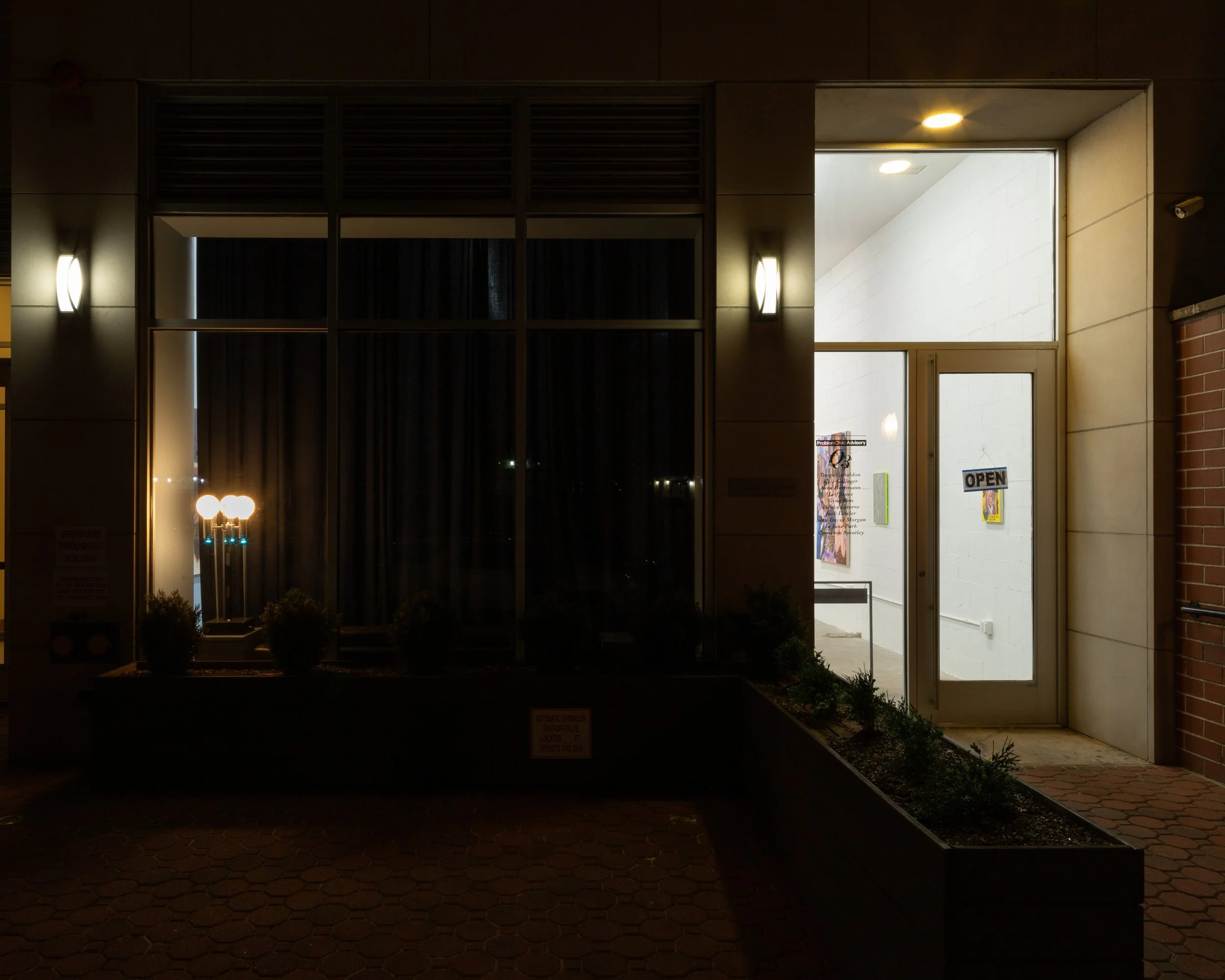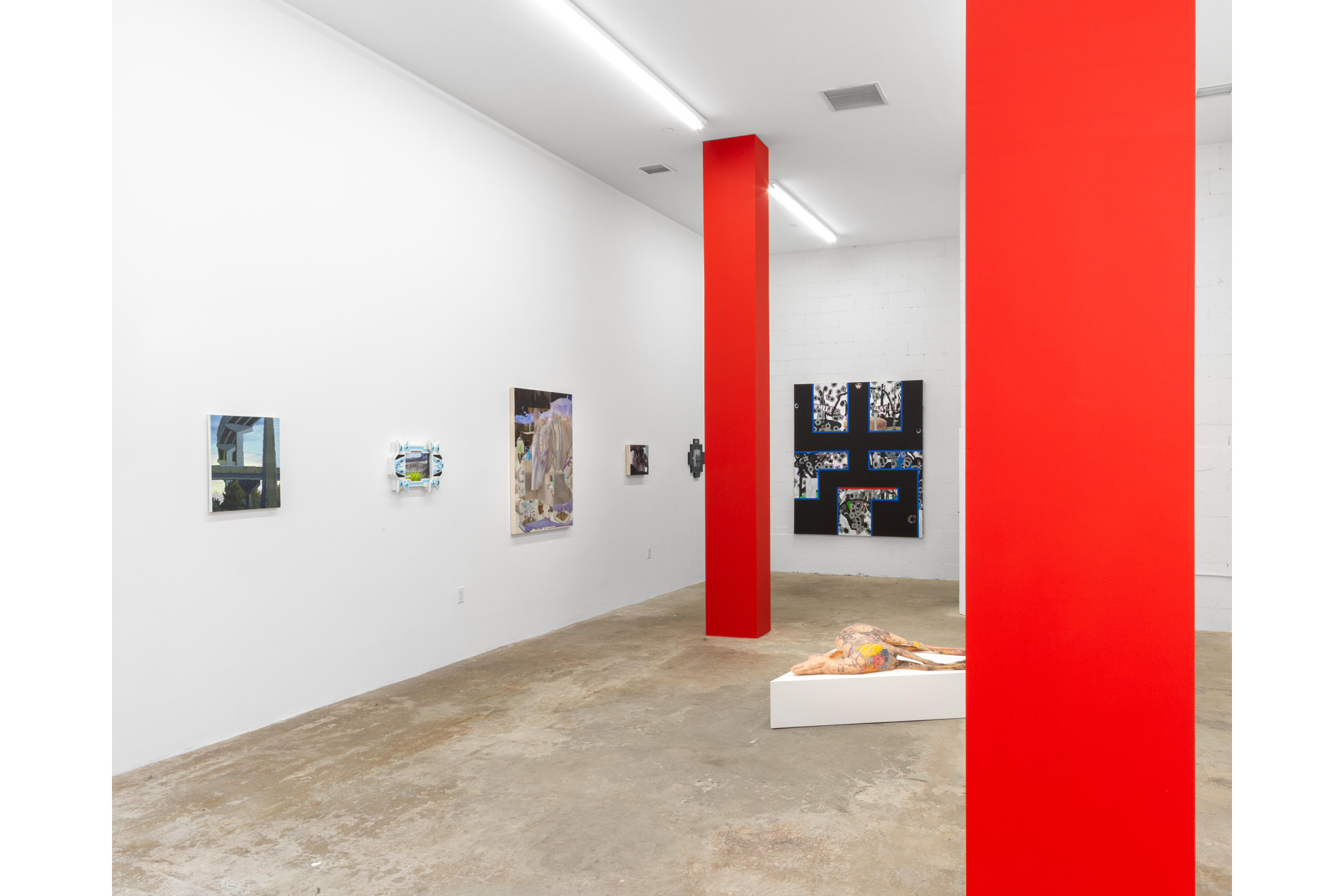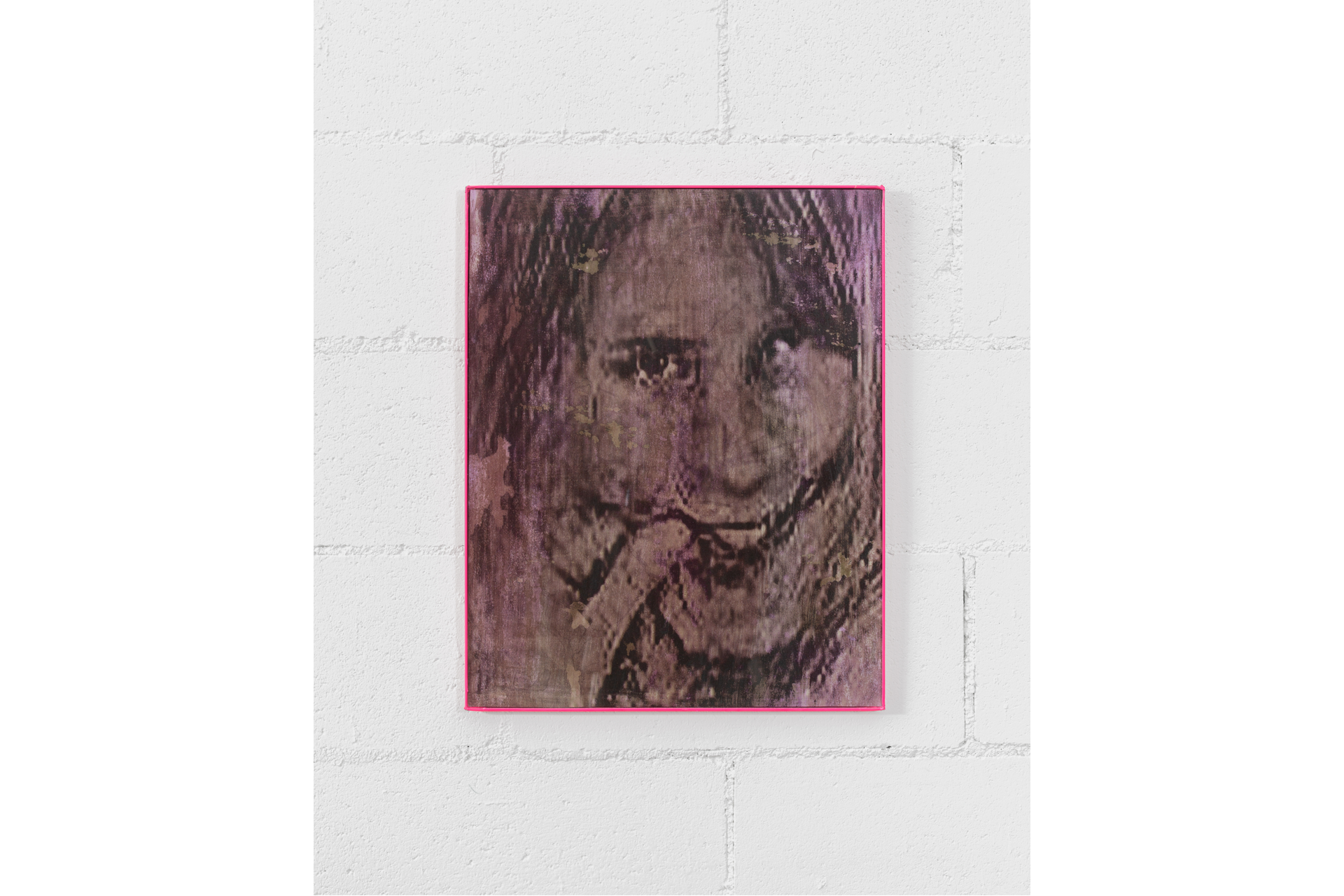Let’s Circle Back Next Quarter
For once, everything about Alyssa Davis Gallery suggests the normalcy of business as usual. Q3, a group exhibition curated by ProblemChild Advisory, inaugurates the gallery’s new brick-and-mortar space after a period of nomadic existence hosted sporadically by compatriot gallerists and art fairs. Davis’s program originally ran out of her West Village apartment until private investigators hired by the building were able to compile enough evidence that this violated zoning laws, forcing the gallery into exile. The cheerful “OPEN” sign hanging from a suction cup stuck to the glass front door of her new digs looks relieved to finally have a stable home base of operations.
Inserted into this newfound sanctuary, wryly cloaked in the imperious language of corporate-speak, Q3 proposes itself as a third-quarter assessment outlining current trends with an eye to the future—assuming everything keeps humming along as it is. Following the sections of a financial year leaves the exhibition straddling the third (July to September) and fourth (October to December) quarters, which means Q3 will glimpse developments in the final quarter and get a taste of whether its prognostications were correct. That’s a big ask, as a lot has happened even just since Q3 opened. It’s a terrifying, chaotic time to be alive, and, judging by wave after wave of editorials, most people in the arts seem to agree that art isn’t meeting our moment. Most things shown recently feel stale.
By its founder’s admission, when I visited late in the show’s run, ProblemChild started as something akin to an image blog and later became a more concerted curatorial effort. In a sense, Q3 may be the entity’s first foray into proper art advisory services, as, rather than introduce her new space with a presentation by artists who have a history with Alyssa Davis Gallery, Davis has invited ProblemChild to treat her gallery like a client and tell her what artists it feels are prudent choices. This may sound like a distinction without a difference, but the show feels more aggregated than curated. Its presentation resembles the Instagram account ProblemChild grew out of, in that its evenly spaced content dots the walls one after another like posts in a feed.
The quarterly organizing conceit in Q3’s title is ultimately a loose one, but loose in the way a big tent is, allowing wider admissions. Formal rhymes between the pieces are tighter. The minimal body outlined in blue and red of Cameron Spratley’s Black Figurative Painting (2025) pairs seamlessly with the shapes and colors in Nina Hartmann’s Orgone Accumulator Diagram (2024) installed adjacent to it. A trapezoidal plinth holds a deer carcass cast in pale pink silicone that Leif Jones has elaborately tattooed in many colors and styles. Baroque frames, slickly fabricated by an athletic gear manufacturer for Diego Gabaldon, suspend his enhanced and remixed images of international football hooliganism in a series of angular planes resembling cleats and padding. Jumpy geometries like these are present throughout; the acrylic frame of Sean David Morgan’s Front Yard Gate (2022) is topped with three cresting tips that resemble the heads of bishops from a traditional chess set. It’s a pointy, prickly exhibition that suggests the feverish stringing of yarn between pushpins on a conspiracist’s corkboard.
A variety of techniques on view emulate the glitches and tics of obsolete media and lossy image compression. Jack Lawler renders a banal highway overpass vista in thick oils as if in moist pixels. Gyae Kim’s pastel airbrush equestrian painting conjures a fun afternoon with the Photoshop clone tool. On the danker end of the spectrum, Danka Latorre’s photographic method produces prints that look like they were saved back and forth between several formats repeatedly. Her subjects were apparently sourced via Microsoft’s perennial also-ran Bing, rather than Google, because the latter’s reverse image search results were too precise and yielded fewer interesting deviations from the input. In June Park’s figures are subtly haloed with warm RGB washes redolent of a paused VHS tape, but also harken back much earlier to the bold shapes of high modernist painters almost a century ago.
For a presentation ostensibly staking its claim in the present, nostalgia haunts most of the artists in Q3. The first work a viewer encounters when entering the gallery, one of two pieces on view by Kyle Gallagher, is an amiable airbrush simulacrum of a trading card originally printed in 1984 to promote the release of the practical effects cult classic Gremlins. That card is older than any of the artists in the show, as far as I can tell. It’s hard not to look back fondly at what felt like “simpler times” with a genocide on your feed and a state funeral for a podcaster to attend. As Q4 looms, one thing is assured: Alyssa Davis’s next show will open at the same address as its current one for the first time since 2022. Anything else, TBD.
Q3 is on view at Alyssa Davis Gallery from September 4 through October 19, 2025.





